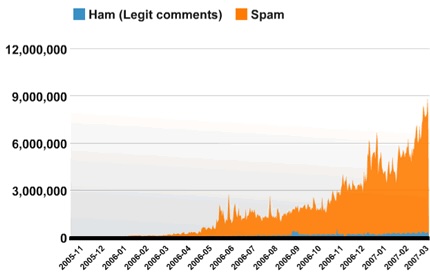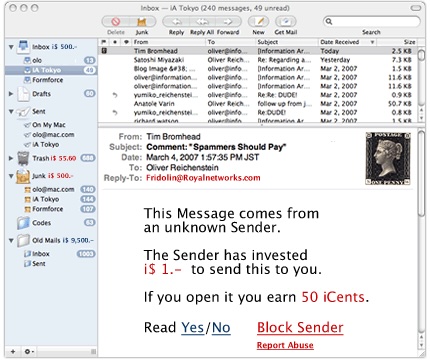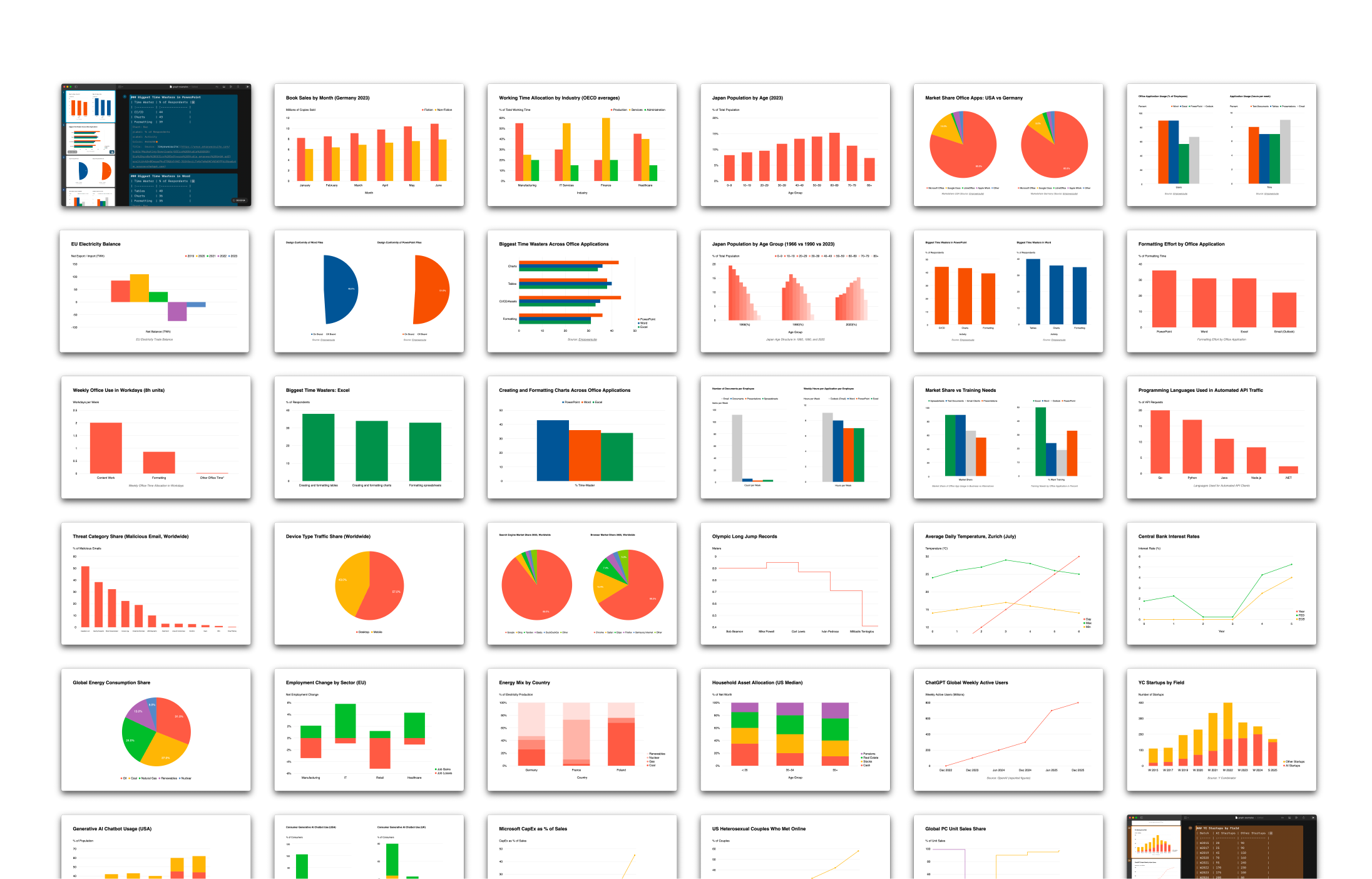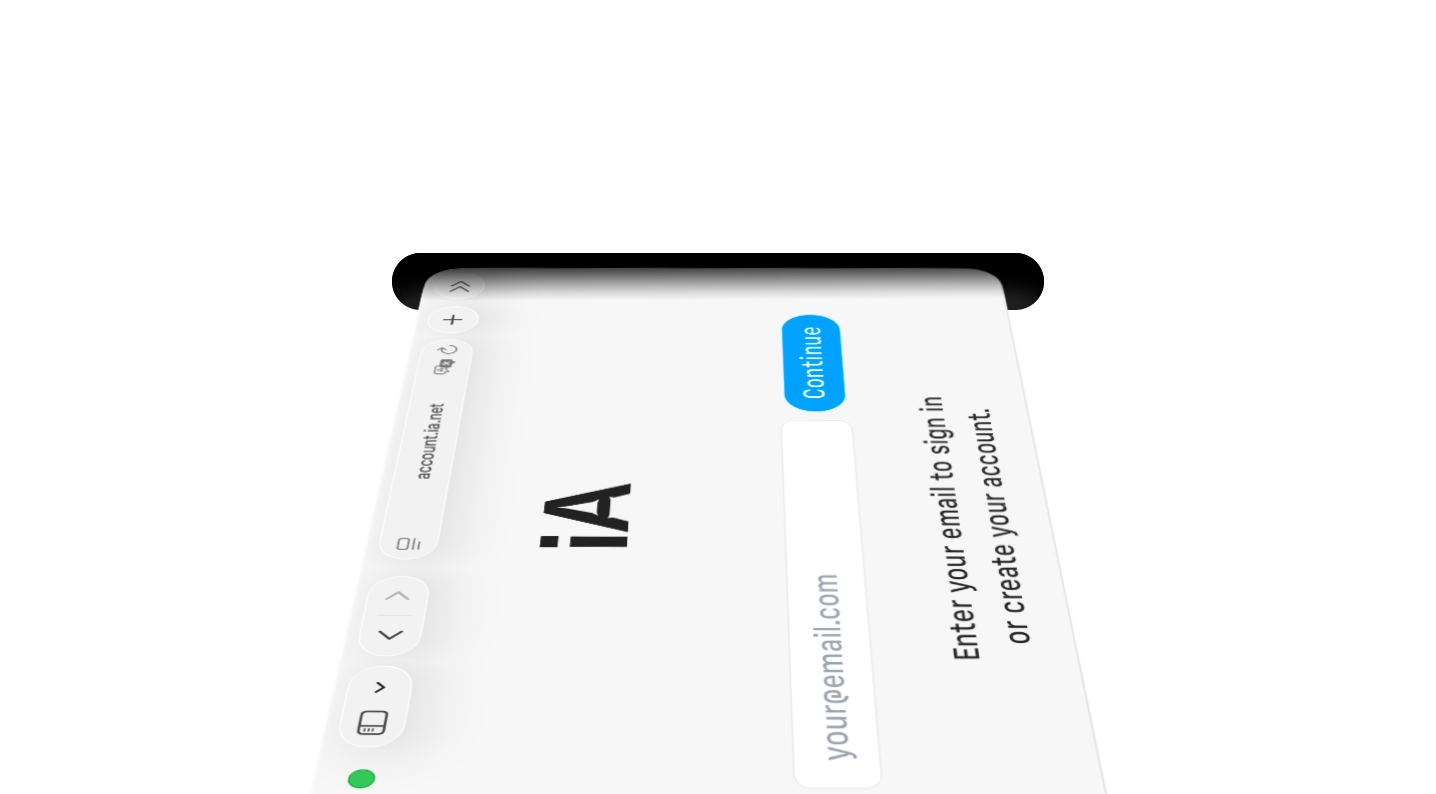The amount of spam and flooding blogs and mailboxes is getting worse and worse and worse. This is Akismet’s graph of ham and spam since they have started. “Ham” is what they call a non-spam message:


The daily increasing anger against spammers led to the following random thought: Push content should reward their readers, and with that reward we should be allowed to buy pull content. Two birds with one stone.
1. Money Online
Two Main Problems
The obvious problem with paid contents is that online payment is a complicated and sometimes insecure process. Most of my attempts to buy something online were abandoned in the sign up process.
The less obvious problem is that information in our times of ubiquitous free data, spam and democratic publishing has become such a hard sell that one expects a new business model coming up. A business model that actually pays the consumer for consuming information (instead of charging him). In the information age attention is the most precious trading good.
Pay your readers
Sounds insane, but if you look at the corporate value of mySpace, youTube, Digg, you realize that it’s not the information on these sites that makes them so valuable, it’s the traffic. The more traffic you get, the higher the value. The model is not new. Advertisement works exactly like that. And it works well. The visitor’s attention is the true value you are aiming at. If users pay attention to you, you pay them back—with quality content or access to quality content.
Okay, but who pays me?
No doubt: Producing quality information takes a lot of time and skill and should be rewarded accordingly. Right now the only valuable business model for bloggers, newspapers, the music industry is advertisement or affiliate programs like Amazon.
Having to additionally pay for people to consume your information seems ridiculous—as long as you have high quality information in mind. What about advertisement or spam? What if you get 1 iDollar for each spam mail that you get in your inbox? What if you get a share for each banner you click?
2. The Value of Attention
Quality information +1 Dollar, ads and spam -1 Dollar
Obviously you cannot pay out real money right away. It would be too easy a business for those annoying click farm owners.
Information will be tagged with a price, a negative price for corporate promotion, spam and advertisement, positive price for high end information like newspapers, music, special reports, movies. Since we’re flooded with crap, information that is worth our attention has become rare and thus very precious.
Virtual money
You need virtual money for that purpose to not freak people out. With virtual money you avoid reactions like these: “What, that article just cost me 50 Cents. Oh no—I could have bought… chewing gum for that money…”
Basically you have an account that fills with virtual money that you can trade in for quality information. As for the value of that information, you can let the market regulate itself. Users should be able to donate iDollars and thus reward undercharged information.
Companies should be able to buy iDollars in exchange for real money at the central Internet Bank. Corporations that accumulate a lot of iDollars can sell them back to the bank.
3. Where to Start
The iDollar Idea: Start with eMail


So imagine each mail you read from an unknown person will cost them 1 Dollar. The spamming will end instantly, as flooding people with millions of crap mails in return for a couple of idiots that actually follow the spammer’s instructions will not pay off anymore.
All you need is an email client with a virtual money system. Connect Mac Mail with iTunes. At this point companies could use that service to promote their stuff. I wouldn’t mind looking at some glossy Nike mails from time to time, if they pay me for it—and if I can buy a record on the iTunes store with that money.
The next step: Create ads with payback
Now imagine that each banner you click on will pay a share into your Internet bank account, meaning that with this share you will be allowed to download music, movies, read quality articles. Obviously banners on high end info sites will reward you better if you click them.
You wouldn’t mind banner advertisement anymore, would you? Internet advertisement would instantly become a huge business (it already is—for Google). The music industry will smile again, and last but not least, people would write their emails more carefully.
4. Online Resources
More on Pay Per Mail
- Electronic Money Transfer Worldwide
- IBM’s Hash Cash Project on Wikipedia
- IBM’s Hash Cash Project
- Microsoft’s Penny Black Research
- Common Misconceptions about Computational Spam-Fighting
More on Digital Cash
- Untraceable Digital Cash, Information Markets, and BlackNet
- Principles for a free, powerful and stable monetary system for the digital era
- “Status Report on Free Market Money” from The Indomitus Report
- Electronic Money Transfer Worldwide
More on Spamming
- Federal Trade Comission page advising people to forward spam e-mail to them
- E-mail Address Harvesting: How Spammers Reap What You Sow by the Federal Trade Commission
- A list of the current top-25 IP addresses used for e-mail spamming, as identified by Project Honey Pot
- Slamming Spamming Resource on Spam
- Why am I getting all this spam? CDT








